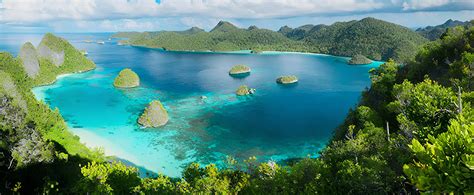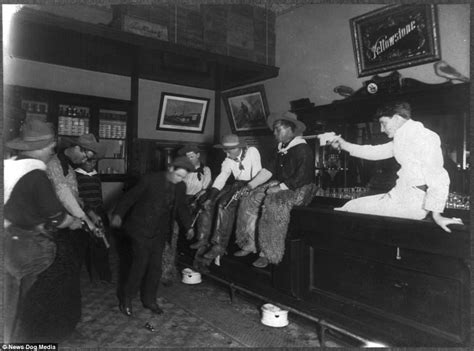
Palawan, a Philippine island known for its dramatic limestone cliffs, pristine beaches, and vibrant coral reefs, has been declared the world’s most beautiful island by Travel + Leisure magazine, surpassing other renowned destinations. The island’s allure stems from its unparalleled natural beauty and diverse ecosystems.
Palawan, long celebrated for its stunning landscapes and biodiversity, earned the top spot in Travel + Leisure’s annual “World’s Best Awards” readers’ survey. The island province, a jewel in the Philippine archipelago, captivated voters with its “seemingly endless stretches of aquamarine water lapping onto white-sand shores,” a description that echoes the sentiments of many who have visited its shores. The award underscores Palawan’s enduring appeal as a premier travel destination.
The island’s appeal isn’t solely aesthetic. Palawan boasts some of the world’s most diverse marine life, attracting scuba divers and snorkelers from across the globe. Its landscapes range from towering mountains covered in lush rainforests to intricate cave systems and subterranean rivers, offering adventurers a wealth of exploration opportunities. This natural diversity has made Palawan a haven for ecotourism and sustainable travel initiatives.
“Palawan is like no other place on Earth,” says tourism expert Elena Rodriguez, who has extensively studied the island’s tourism impact. “It offers a unique blend of natural beauty, cultural richness, and adventure. The island’s commitment to preserving its environment is also a significant factor in its appeal to travelers.”
The island’s victory is expected to further boost tourism in the Philippines, already a popular destination in Southeast Asia. The Department of Tourism in the Philippines has expressed its enthusiasm for the award, stating that it “reflects the country’s commitment to sustainable tourism and environmental preservation.” The award is also a testament to the local communities that have worked tirelessly to protect Palawan’s natural resources.
Palawan’s recognition comes at a crucial time as the global tourism industry recovers from the impacts of the COVID-19 pandemic. The award is expected to attract more international visitors, contributing significantly to the island’s economy and supporting local businesses.
Key Attractions and Features
Palawan’s natural attractions are the primary draw for tourists. The island offers a diverse range of activities and experiences, catering to different interests and preferences.
-
Underground River: The Puerto Princesa Subterranean River National Park, a UNESCO World Heritage Site, is one of Palawan’s most famous attractions. Visitors can take boat tours through the underground river, marveling at the stunning rock formations and unique ecosystem.
-
El Nido: El Nido, located in the northern part of Palawan, is renowned for its dramatic limestone cliffs, hidden lagoons, and pristine beaches. Island hopping tours are popular, allowing visitors to explore the Bacuit Bay archipelago.
-
Coron: Coron, another popular destination in Palawan, is famous for its World War II shipwreck diving sites. The clear waters and abundant marine life make it a haven for scuba divers and snorkelers. Kayangan Lake and Barracuda Lake are also popular attractions in Coron.
-
Beaches: Palawan boasts numerous beaches, each with its own unique charm. Nacpan Beach, Long Beach, and Secret Lagoon are among the most popular choices, offering opportunities for swimming, sunbathing, and relaxing.
Sustainable Tourism Initiatives
Palawan has made significant strides in promoting sustainable tourism practices. The local government and tourism stakeholders have implemented various initiatives to minimize the environmental impact of tourism and preserve the island’s natural resources.
-
Environmental Fees: Tourists visiting Palawan are often required to pay environmental fees, which are used to fund conservation projects and maintain the cleanliness of tourist sites.
-
Eco-Friendly Accommodations: Many hotels and resorts in Palawan have adopted eco-friendly practices, such as using renewable energy, reducing waste, and supporting local communities.
-
Responsible Tour Operators: Several tour operators in Palawan are committed to responsible tourism practices, such as minimizing their carbon footprint, promoting ethical wildlife interactions, and supporting local conservation efforts.
-
Community-Based Tourism: Palawan has also promoted community-based tourism initiatives, which empower local communities to benefit from tourism while preserving their cultural heritage and natural resources.
Challenges and Opportunities
Despite its success in attracting tourists, Palawan faces several challenges, including managing the environmental impact of tourism, ensuring equitable distribution of benefits, and addressing infrastructure limitations.
-
Environmental Impact: The increasing number of tourists poses a threat to Palawan’s fragile ecosystems. Pollution, waste generation, and damage to coral reefs are among the key environmental challenges.
-
Equitable Distribution of Benefits: While tourism has brought economic benefits to Palawan, there are concerns about the equitable distribution of these benefits. Many local communities remain marginalized and lack access to opportunities.
-
Infrastructure Limitations: Palawan’s infrastructure, including roads, airports, and utilities, needs to be improved to support the growing tourism industry.
Despite these challenges, Palawan also has numerous opportunities to further enhance its tourism industry and promote sustainable development.
-
Diversifying Tourism Products: Palawan can diversify its tourism products by promoting niche markets, such as ecotourism, adventure tourism, and cultural tourism.
-
Investing in Infrastructure: The government and private sector can invest in improving Palawan’s infrastructure to support the growing tourism industry.
-
Strengthening Environmental Regulations: Palawan can strengthen its environmental regulations and enforcement to protect its natural resources.
-
Empowering Local Communities: Palawan can empower local communities by involving them in tourism planning and decision-making processes.
Impact on the Philippines
Palawan’s recognition as the world’s most beautiful island is expected to have a positive impact on the Philippines as a whole.
-
Increased Tourism: The award is likely to attract more international tourists to the Philippines, boosting the country’s tourism industry and economy.
-
Positive Image: Palawan’s recognition enhances the Philippines’ image as a premier travel destination, showcasing the country’s natural beauty and cultural richness.
-
Sustainable Tourism: Palawan’s commitment to sustainable tourism practices can serve as a model for other destinations in the Philippines and around the world.
The Philippines Department of Tourism has already launched promotional campaigns highlighting Palawan’s achievement and encouraging tourists to visit the island and other destinations in the country. The award is seen as a significant opportunity to showcase the Philippines’ tourism offerings to a global audience.
Quotes from Key Figures
Several key figures have commented on Palawan’s recognition as the world’s most beautiful island.
“We are thrilled and honored that Palawan has been recognized as the world’s most beautiful island,” said Bernadette Romulo-Puyat, the Philippines’ Secretary of Tourism. “This award is a testament to the hard work and dedication of the local communities and tourism stakeholders who have worked tirelessly to preserve Palawan’s natural resources and promote sustainable tourism.”
“Palawan’s natural beauty is truly breathtaking,” said Travel + Leisure editor-in-chief Jacqui Gifford. “The island’s stunning landscapes, pristine beaches, and vibrant marine life make it a truly special destination.”
“I have traveled to many beautiful places around the world, but Palawan is truly unique,” said renowned travel blogger Nomadic Matt. “The island’s combination of natural beauty, adventure opportunities, and cultural richness is unmatched.”
Historical Context of Palawan
Palawan’s history is as rich and diverse as its natural landscape. Archaeological evidence suggests that the island has been inhabited for at least 50,000 years. The Tabon Caves, often called the “Cradle of Philippine Civilization,” have yielded some of the oldest human remains in Southeast Asia.
During pre-colonial times, Palawan was a hub of trade and cultural exchange. Its strategic location made it a meeting point for merchants from China, India, and other Southeast Asian countries. The island was ruled by various local chieftains and was influenced by different cultures.
In the 16th century, the Spanish colonizers arrived in Palawan, marking the beginning of a new era. The Spanish established settlements and introduced Christianity to the island. However, Palawan remained relatively isolated compared to other parts of the Philippines.
During World War II, Palawan was occupied by the Japanese forces. The island became a site of fierce battles between the Japanese and American forces. After the war, Palawan underwent a period of reconstruction and development.
In recent decades, Palawan has emerged as a popular tourist destination, attracting visitors from around the world. The island’s natural beauty and commitment to sustainable tourism have made it a model for other destinations.
Analysis of Travel + Leisure’s Ranking Methodology
Travel + Leisure’s “World’s Best Awards” are based on an annual readers’ survey. Readers are asked to rate destinations based on various factors, including natural attractions, beaches, food, culture, and hospitality.
The survey results are then compiled and analyzed to determine the top-ranked destinations in different categories. Palawan’s recognition as the world’s most beautiful island is based on its high scores in the natural attractions and beaches categories.
The survey methodology is designed to be objective and unbiased, reflecting the opinions and experiences of a wide range of travelers. The “World’s Best Awards” are widely respected in the tourism industry and are considered a reliable indicator of travel trends and preferences.
Comparison with Other Top-Ranked Islands
Palawan’s victory in Travel + Leisure’s survey is particularly noteworthy given the strong competition from other top-ranked islands around the world. Some of the other islands that have been recognized for their beauty and appeal include:
-
Maldives: Known for its luxurious resorts, pristine beaches, and vibrant coral reefs.
-
Bali, Indonesia: Renowned for its stunning landscapes, rich culture, and spiritual traditions.
-
Santorini, Greece: Famous for its whitewashed villages, dramatic cliffs, and breathtaking sunsets.
-
Maui, Hawaii: Known for its diverse landscapes, including volcanic craters, rainforests, and beaches.
Palawan’s unique combination of natural beauty, adventure opportunities, and commitment to sustainable tourism sets it apart from these other top-ranked islands.
Future Outlook for Tourism in Palawan
The future outlook for tourism in Palawan is bright, with the island poised to continue attracting visitors from around the world. However, it is essential that Palawan continues to prioritize sustainable tourism practices to ensure that its natural resources are protected for future generations.
The local government and tourism stakeholders should work together to address the challenges facing the industry, such as managing the environmental impact of tourism, ensuring equitable distribution of benefits, and improving infrastructure.
By investing in sustainable tourism initiatives and promoting responsible travel practices, Palawan can maintain its status as the world’s most beautiful island and continue to provide visitors with unforgettable experiences.
FAQ about Palawan Being Named World’s Most Beautiful Island
1. What makes Palawan the most beautiful island in the world?
Palawan’s beauty stems from its diverse and stunning natural landscapes. The island boasts “seemingly endless stretches of aquamarine water lapping onto white-sand shores,” dramatic limestone cliffs, lush rainforests, intricate cave systems, and vibrant coral reefs. The Puerto Princesa Subterranean River National Park, a UNESCO World Heritage Site, is a major draw, along with the pristine beaches and hidden lagoons of El Nido and the world-class diving in Coron.
2. How was Palawan chosen as the “World’s Most Beautiful Island”?
Palawan was awarded the title by Travel + Leisure magazine based on the results of their annual “World’s Best Awards” readers’ survey. Readers rate islands based on factors like natural attractions, beaches, activities, restaurants, and overall value. Palawan consistently scores high in natural beauty and beach quality.
3. What are some of the top attractions to visit in Palawan?
Some must-see attractions in Palawan include:
- Puerto Princesa Subterranean River National Park: Explore the stunning underground river by boat.
- El Nido: Island hop through the Bacuit Bay archipelago, known for its limestone cliffs and hidden lagoons.
- Coron: Dive or snorkel among World War II shipwrecks and explore Kayangan Lake and Barracuda Lake.
- Nacpan Beach & Long Beach: Relax on these expansive and beautiful beaches.
- Secret Lagoon: Discover hidden lagoons and stunning beaches
4. What steps are being taken to ensure sustainable tourism in Palawan?
Palawan is committed to sustainable tourism, with several initiatives in place to minimize environmental impact:
- Environmental Fees: Tourists often pay fees to fund conservation projects.
- Eco-Friendly Accommodations: Many hotels and resorts use renewable energy and reduce waste.
- Responsible Tour Operators: Operators minimize their carbon footprint and promote ethical wildlife interactions.
- Community-Based Tourism: Involves local communities in tourism planning and benefits.
- Strict Regulations: The local government enforces rules against littering and other environmentally damaging activities.
5. How does Palawan’s recognition as the “World’s Most Beautiful Island” impact the Philippines?
Palawan’s recognition significantly boosts the Philippines’ tourism industry. It attracts more international visitors, generates revenue for local businesses, and enhances the country’s image as a premier travel destination. This recognition reinforces the Philippines’ commitment to sustainable tourism and environmental preservation, setting a positive example for other destinations worldwide.









